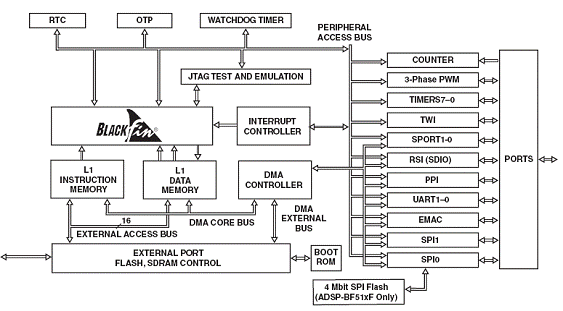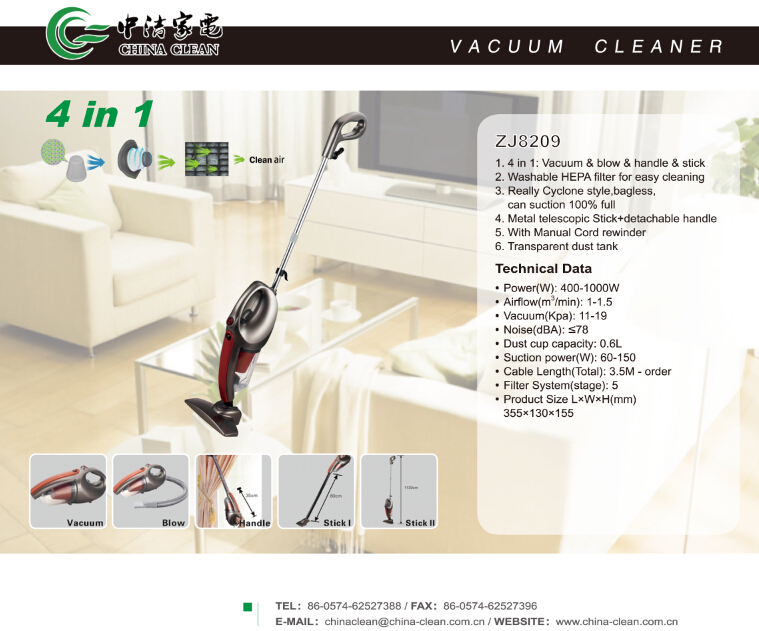Processor selection in VoIP solutions As VoIP continues to replace analog phones in the enterprise voice communications market, the technology is also rapidly adopted in residential environments and small and medium enterprises (SMBs). The advantages of VoIP, such as multiple lines, the use of inexpensive digital media voice communication systems, and significantly reduced communication rates, are not only attractive to large enterprises but also to smaller customers. As the demand for VoIP equipment, handsets, IPPBXs, and gateways continues to grow, the requirement for higher sound quality has clearly become the primary consideration. Market feedback has shown that if VoIP is better than typical POTS (plain old telephone service) Low, mainstream customers will not switch to VoIP. The challenge for VoIP hardware developers is to choose a platform that provides an appropriate combination of system performance and total bill of materials (BOM) cost to provide a successful solution in a highly competitive market. The core processor in the VoIP system is a key component in the design, which greatly affects the voice quality, feature set, and bill of materials processed. This article will examine the hardware requirements of VoIP and the compromises that must be considered when choosing an effective method from multiple levels. Processor requirements for VoIP applications The main issues that VoIP hardware product developers face are related to feature set, voice quality, product cost, development plan, and design scalability. The ideal way is to develop a common hardware / software platform to be able to satisfy many different products. However, each terminal device (IP phone, IAD (Integrated Access Device), home gateway, and IP-PBX) has different requirements, and choosing a processor platform that meets all these requirements is a big challenge. The life cycle of most terminal equipment is very short, and will soon be replaced by new versions with new performance or different features. This trend requires a way to make it more flexible and help rapid design. The method ensures that the time to market of new products is minimized. The following table describes the available VoIP hardware working platforms. All of these solutions weigh the bill of materials used, design flexibility, development plan, and time to market for products with known performance levels and synthesized speech quality. Different methods have their own advantages and disadvantages, and the decisions made must take into account product and market priorities. The microcontroller-based platform provides embedded designers with a familiar and inexpensive method, as well as a friendly development environment, which is itself typically low-cost and can easily handle IP packets. However, for processing such as speech encoding / decoding and echo cancellation signal processing, the microcontroller is not a good choice, it is a limited platform for the evolution of VoIP products. DSP architecture is better at data stream processing, which is easier for voice processing. For this reason, adding DSP to the design makes more sense, which makes the processing tasks assigned to the processor more suitable for execution. But this will increase the bill of materials, not only add additional processors, but also require more memory and peripherals. And multi-chip (whether MCU plus DSP, or MCU plus ASIC) will add more bill of materials, and more workload. Dedicated, fixed-function hardware is another method that has a significant negative impact on design flexibility. If it is a custom chip design, it also has NRE (one-time engineering cost) and time-to-market effects. If it is a commercially available ASSP (application specific standard product), the ability to design differentiated products will be significantly affected. Another better way is to build or purchase an SOC that integrates MCU and DSP on a single chip, which can reduce the number of product packages, and has a certain loss in flexibility, but provides programmability. MCU and DSP programs can be applied to different target applications. The last method discussed is to use a single "converged" processor to handle the control logic and voice engine. "Aggregation" processor refers to a single processor with signal processing performance in the field of independent DSPs. Different MCU manufacturers have integrated certain signal processing functions, such as instruction set expansion and MAC unit on the MCU core, but this method lacks the fundamental structural foundation required for high-performance signal processing to handle advanced voice quality enhancements , Such as high-performance echo cancellers and noise suppression. ADI's Blackfin processor has high performance in signal and control program execution, in line with the "convergence" processor standard. Since the “aggregation†process satisfies all the key success factors in the VoIP hardware platform and has a clear leading advantage, this method will be discussed in the rest of this article. Blackfin, optimized media processing "aggregation" processor architecture ADI ’s Blackfin is a single-processor system architecture, with DSP features not found in all other RISC microcontrollers, and also has important microcontroller features not normally available on DSPs, managing all packages within the same processor core Processing and media processing are therefore a more efficient solution for IP media processing. In the MCU plus DSP method introduced above, designers have an important bottleneck when implementing VoIP solutions. Data must be transferred back and forth between the MCU and the DSP subsystem. This undoubtedly introduces delay and increases system overhead. Blackfin is also a very flexible and high-performance processing engine. All Blackfin cycles can be allocated to execute control program processing or signal processing, without some individual restrictions that appear in the MCU plus DSP design. In addition, Blackfin also provides a fully programmable solution, removing the hardware block that locks the designer to a fixed codec or algorithm, and adding or changing certain features can be changed through software, through the optional stacked FLASH Memory, or board-level assembly FLASH, greatly simplifies the design work. The Blackfin processor also has a large number of solution-oriented peripherals and interfaces, which can reduce the development workload, complexity and number of devices, including 10/100 Ethernet MAC, multiple DMA channels, LCD interface, multiple serial ports, parallel ports and Features such as audio ports and low power consumption are all valuable to the solution. In addition, industry-leading application-level, system-level, and development tool software supports Blackfin processors. The VoIP solution from Global IP SoluTIons and the open source Asterisk software package are optimized for Blackfin processors. Using system-level kernel and firmware solutions, ADI's software (VDK), Unicoi (Fusion) and uClinux all support Blackfin processors. ADI's development tools (VisualDSP ++) and open source GNU tools allow rapid code development and verification. In order to meet the design requirements of different customers on hardware and software, ADI supports different options, covering from a series of independent software components to a complete FOB product reference design, and has industry-leading performance, power consumption and price. BF516 has very high performance, supports 400MHz operation, it integrates key peripherals, and seamless interface with other system equipment, thus reducing BOM cost. The main features of BF516 include: · Blackfin core up to 400MHz and 116KB L1 on-chip memory, providing more performance to handle high-complexity media algorithms; · Ethernet MAC with DMA support provides a network connection with less processor overhead; · PPI / LCD controller for IP phone user interface; · Two SPORTS ports can be connected to codec and SLIC; · A mobile storage interface (RSI) controller for IP-PBX that can be connected to MMC, SD and CE-ATA devices; · Up to 40 GPIO ports, can be used for IP phone keyboard and LED control; · 2 UARTS; · 2 SPI interfaces; · TWI (I2C) controller; · 8 timers; · LockBox / 8kB OTP for security and IP protection.
This style is a Corded Sticker Vacuum Cleaner. It also is a 4 In 1 Vacuum Cleaner. What is 4 in 1,that is vacuum,blow,handle and stick. This function let you can use it in many places. This Vacuum Cleaner is very a lightweight vacuum cleaner,so when you use it,you will be comfortable. The function of blow that you can blow anything. It's a useful vacuum cleaner with 4 functions,hope you will like it. Now let's see the pictures about it.
Corded Sticker Vacuum Cleaner Lightweight Upright Vacuum Cleaners, Corded Sticker Vacuum Cleaner, Corded Handheld Vacuum Cleaner, Lightweight Corded Vacuum Cleaners Ningbo ChinaClean Household Appliances Manufacture Co., Ltd. , https://www.chinaclean-elec.com
Table 1: Comparison of VoIP device processors based on key decision criteria. 
Figure 1: BF516 low-power Blackfin processor for VoIP peripherals. 